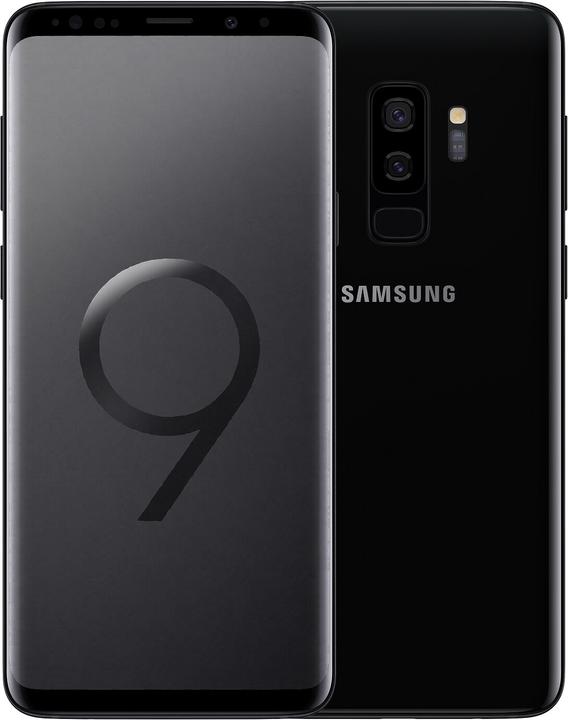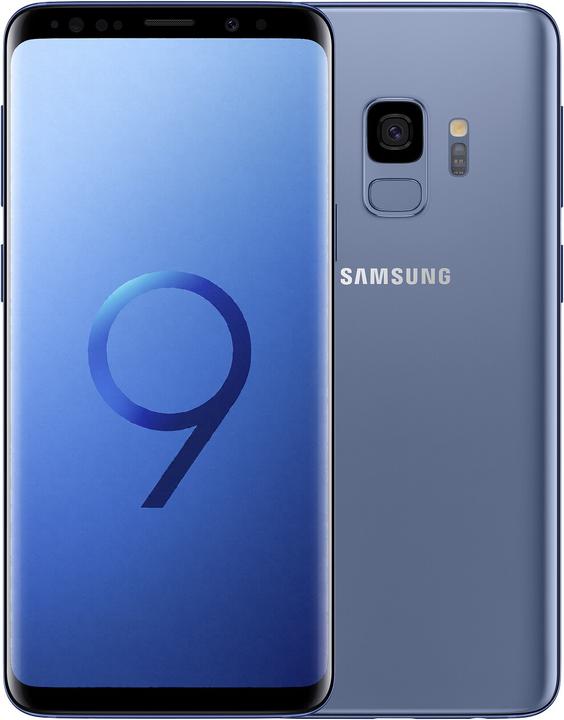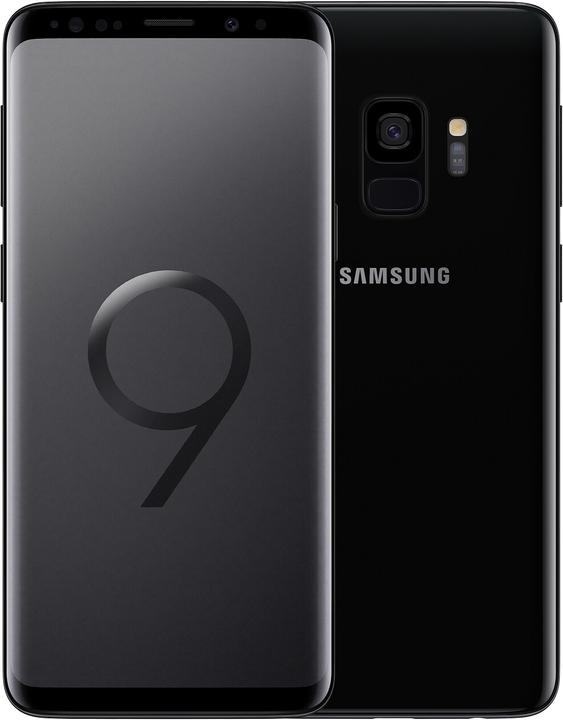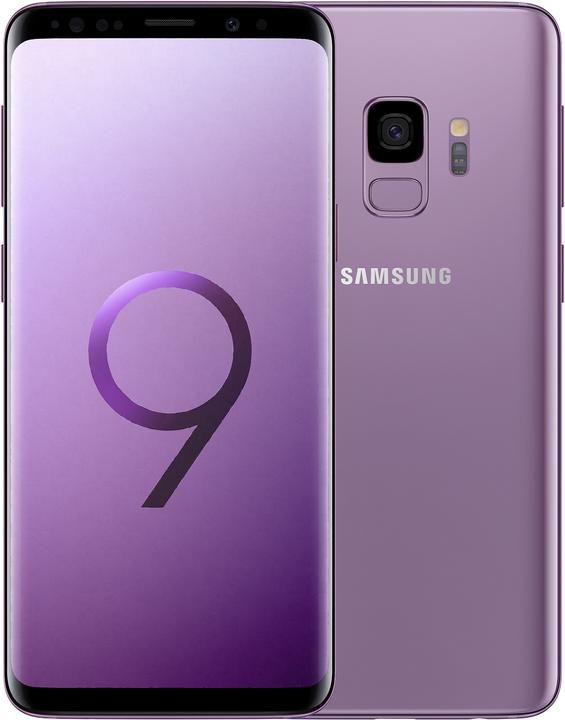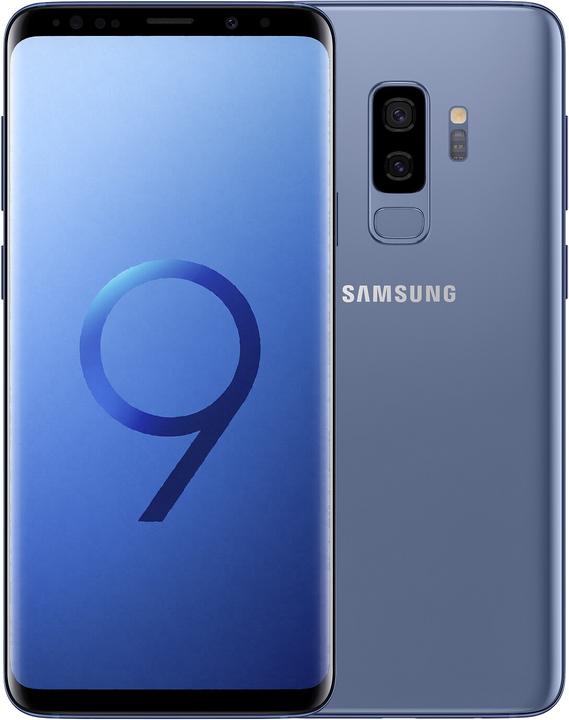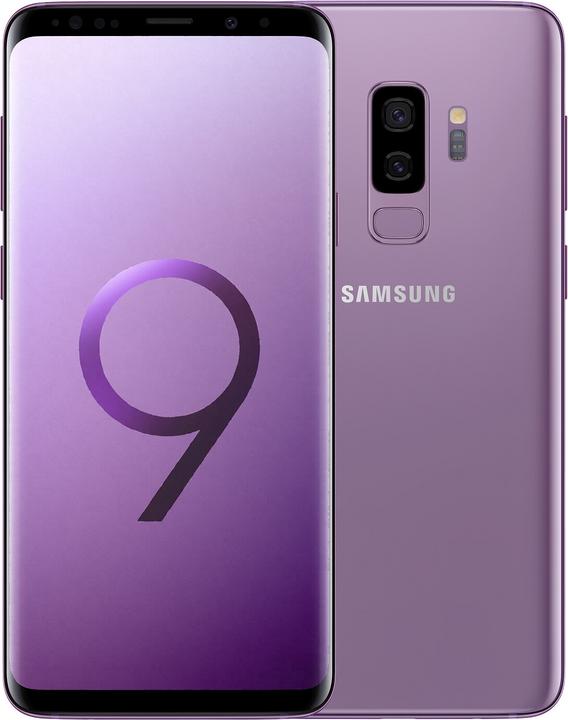
Samsung Galaxy S9: my first impression
Samsung has just presented their newest model: the Galaxy S9. I’ve had the chance to give it a go and get a first-hand impression.
«There’s a lot to test here,» I thought when I got my hands on the Samsung Galaxy S9+ for the first time. Not because of its design, but because of what the Samsung representative said about this phone at the press event at the London Design Museum.
The design is nothing new. You know what the S8+ looks like, right? Then you know what the S9+ looks like. The shape hasn’t changed much and the rounded corners and large screen have also remained. If you take a closer look, you’ll see that the bezels are even smaller.
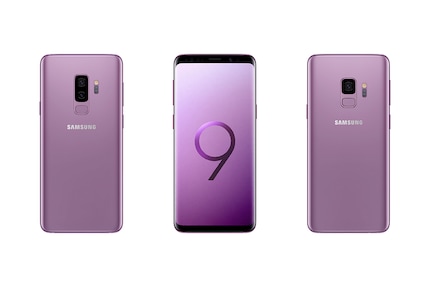
What’s new is the colour, the S9 «Hero Colour»: Lilac Purple. The S8 came in Orchid Grey; Lilac Purple is new. The S9 is available in three colours, none of them are white or grey:
- Midnight Black
- Lilac Purple
- Coral Blue
The S9 and S9+ are available in all three colours, but only in the version with 64 GB internal storage, which can be extended by another 400 GB. The 256 GB version is only available in black.
With the S8+, you had to smudge the camera to get to the fingerprint scanner. By placing the scanner underneath the cameras, the S9+ has avoided this issue. Yes, cameras: The S9+ is equipped with a dual camera setup. The smaller version, S9, only features one camera.
The camera with a mechanical aperture
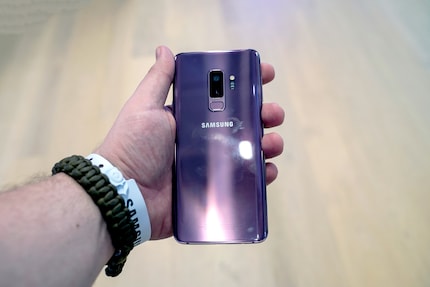
Every new Samsung phone has its own slogan. The S8 slogan was «Unbox Your Phone» in reference to its new screen; the Note 8 slogan was «Do Bigger Things» because it had an even larger screen and a Stylus pen; the S9 slogan is «The Camera. Reimagined».
For the first time ever, Samsung have built a mechanical aperture into a smartphone.
It looks quite impressive when the camera closes the aperture. A thorough test will show whether this offers massive advantages in daily use – the rather lab-like conditions in the London museum aren’t ideal to draw a conclusion for everyday life. Only the 6.2-inch screen of the S9+ and the 5.8-inch screen of the S9 shine against the brightly lit room.
The mechanical aperture isn’t all that Samsung has improved; the ability to absorb light is another aspect the South Korean company has worked on. The cameras feature F-Stop of 1.4 and 2.5. F-Stop describes the amount of light that’s absorbed by the sensor behind the camera. The lower the number, the more light is absorbed. This is particularly noticeable when it comes to two aspects:
- Depth of field – also referred to as Bokeh – becomes clearer
- Shots taken in low light become brighter and richer in detail
Image quality is also supported by a software. For this purpose, Samsung has installed dedicated DRAM for the image sensor, resulting in faster calculation and better image processing. When you take a photo with the S9, the camera actually takes twelve shots and the software puts these together to a perfect picture. This way, the hardware/software combination minimises image noise.
These details about the camera and technology were provided by Samsung in a PowerPoint presentation:
- The camera lens absorbs 28 percent more light.
- The entire camera system reduces image noise by 30 percent.
- The dedicated DRAM makes the camera four times faster than that of the S8.
Moving pictures

With the additional working memory that’s provided by the DRAM, the camera has become faster. Much faster. Slow-motion recordings are now possible with up to 960 frames per second. A one-second recording can be extended to 16 seconds at 60 frames per second. Haven’t you always wanted to see how your dog shakes water off his fur in slow motion?
On top of this, Samsung – just like Apple – has added AR Emojis, which let you create and use your own avatar.
You can use both slow-motion recordings and emojis on your desktop. This looks especially great with slow-motion shots – as Samsung demonstrated at the press event with a bursting water balloon. Every single frame looked razor-sharp and there was absolutely no loss of detail to be seen. Again, this seemed a bit too perfect and made me think these beautiful pictures might have been taken under lab-like conditions – conditions that are ideal to show off this feature. Time will tell whether I’m being too cynical or whether my suspicions are justified.
Bixby, Stereo and finally, Android 8.0
Another aspect Samsung has worked on Bixby. However, it’s questionable whether Bixby is useful in Switzerland. On the S8 and Note 8, it was a bit useless; it didn’t know anything about Switzerland and didn’t understand German, let alone Swiss German.
Despite the small market of Switzerland, Samsung isn’t going to give up. Bixby might not be intended for Switzerland, but it has a few features we can use – Bibxy Vision for instance. When you point Bixby Vision – the Personal Assistant's eye – at text in a supported language, Bixby translates the text for you in real time. The camera footage is edited directly on the screen, so an Italian menu can be displayed in such a way that the Italian text is overlaid with German text.
In addition to improved hardware, the S9 is equipped with stereo speakers with Dolby Atmos. Neat, right? Again, I’ve only heard the sound under lab conditions, but if it’s as good as the Razor Phone, which also has Stereo Dolby Atmos, the S9 plays pretty darn good sound.
What’s left to say? Time will tell. I was able to hold the S9 in my hands in London, but didn’t have enough time to test it thoroughly. Yet, it looks like Samsung has come up with the real deal this time.

Journalist. Author. Hacker. A storyteller searching for boundaries, secrets and taboos – putting the world to paper. Not because I can but because I can’t not.
From the latest iPhone to the return of 80s fashion. The editorial team will help you make sense of it all.
Show all